Understanding Baccarat: Rules, Strategies, and Expert Insights
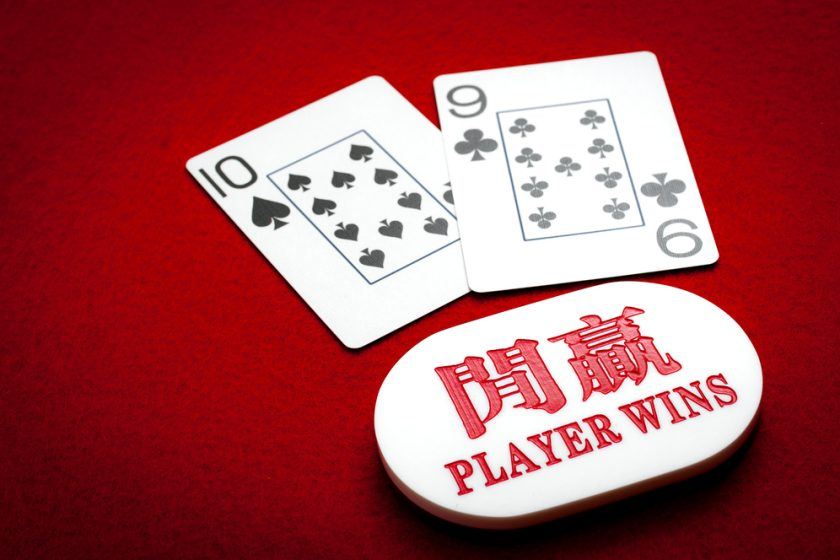
Title Image Credit: Victor Moussa/Shutterstock
An Introduction to Baccarat
Baccarat is celebrated for its air of exclusivity and simplicity-a unique mix that both attracts and intimidates casino-goers worldwide. Often seen as the game of choice for high-rollers, this classic card game is actually one of the simplest table games to learn and play. With some of the most favorable casino odds and a global fan base stretching from Macau to Monte Carlo, Baccarat is an enduring favorite for both newcomers and seasoned gamblers.
Key Takeaways: Learning Baccarat
- Grasp the core rules and goals of Baccarat, including how to achieve a winning hand.
- Explore the three primary Baccarat variants: Punto Banco, Chemin de Fer, and Baccarat Banque.
- Familiarize yourself with the table layout, the dealer’s role, and how hands are dealt.
- Understand your betting choices-Player, Banker, and Tie-along with their respective payout structures.
- Discover the house edge behind each option to make smarter wagering decisions.
The Fascinating History Behind Baccarat
The origins of Baccarat date back to 15th-century Italy, where it was first devised by Felix Falguiere. The name “baccarat” comes from “baccara,” Italian for zero, because all 10s and face cards have a value of zero. The game’s allure quickly spread to French nobility, eventually evolving into a favorite among Europe’s elite.
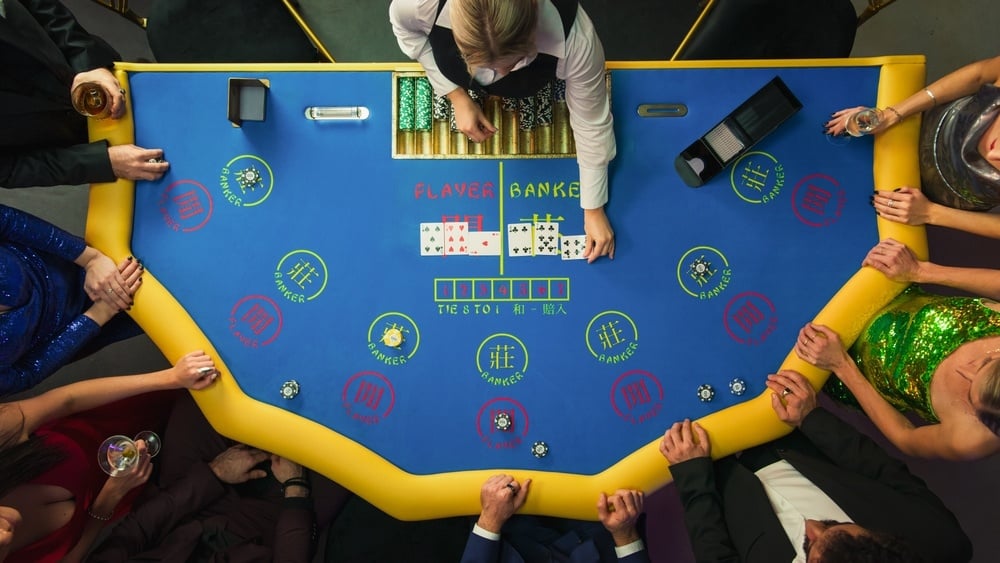
Image Credit: Kitreel/Shutterstock
A notable episode in its past-the Royal Baccarat Scandal-saw the future King Edward VII involved in a cheating accusation that gripped British high society. Over the centuries, Baccarat branched into three major forms:
- Chemin de Fer: The original French format, where players can act as the banker.
- Baccarat Banque: A European variation with three participants.
- Punto Banco: The North American version, now the most popular globally and a staple in today’s casinos.
Punto Banco made its way to Las Vegas in the 1950s, first restricted to high-limit salons before becoming accessible to everyday players. Today, it’s the top revenue-generating table game in many casinos worldwide.
Mastering the Basic Baccarat Rules
Despite its reputation for elegance, Baccarat is very straightforward. Here’s how the game is played:
- Goal: Wager on which hand-Player or Banker-will total closest to nine.
- Card Values:
- 2-9: Face value
- Aces: 1 point
- 10s, Jacks, Queens, Kings: 0 points
- If the total is double-digits, only the unit digit counts (e.g., 13 becomes 3).
- Game Flow:
- Both Player and Banker receive two cards each.
- An additional third card may be drawn based on specific rules-these are automatic and don’t require player input.
- The winner is the hand closest to nine.
- Example: If Player draws 7 and 5 (totaling 12), the value is 2. If Banker draws 9 and 3, the value is also 2, resulting in a tie.
Players love the simplicity: after bets are placed, the rest is up to the preset rules, freeing you from complicated decisions.
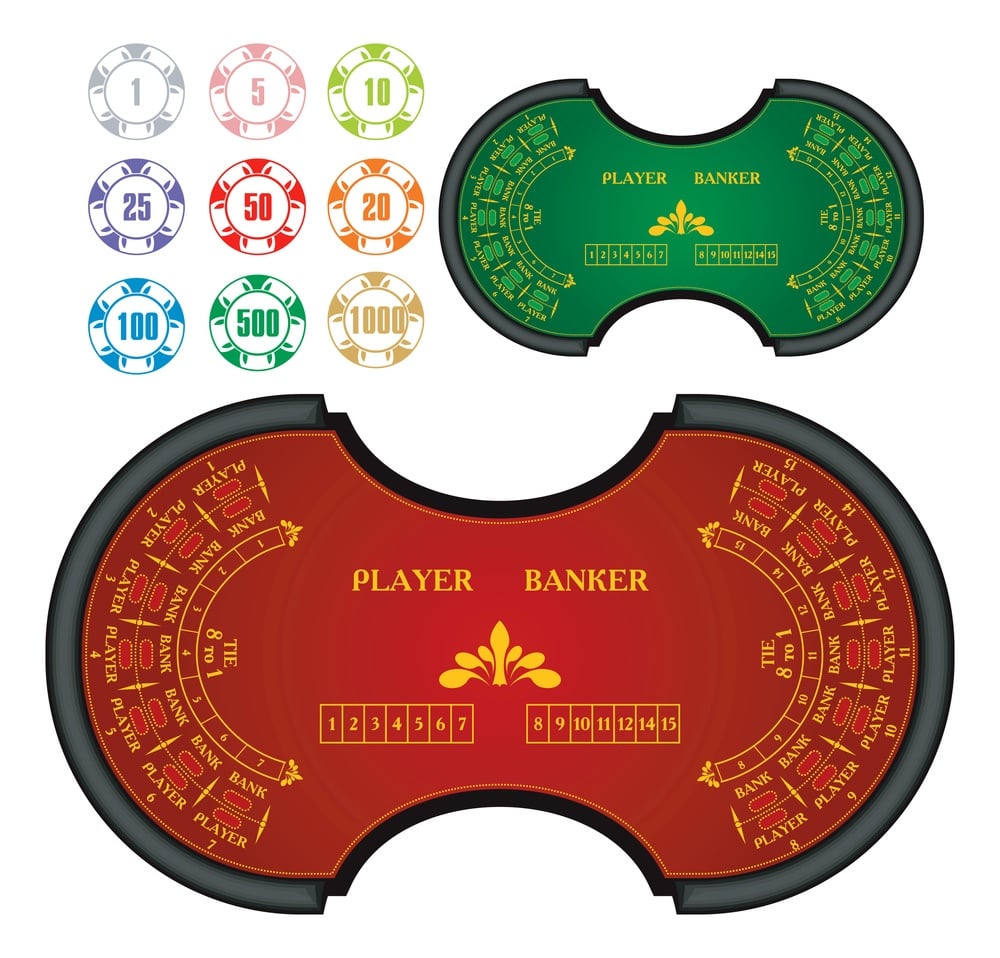
Image Credit: Sergey Korotkih/Shutterstock
Understanding Player and Banker Hands
One of the biggest misconceptions is that “Player” and “Banker” refer to the people at the table. In reality, these just describe the hands themselves-you can bet on either one no matter your seat.
Here’s a look at the rules governing third card draws:
Player’s Hand
- If Player’s initial cards total 0-5: Player draws a third card.
- If the total is 6 or 7: Player stands.
- If either hand shows an 8 or 9 (“natural”): Neither hand draws further cards.
Banker’s Hand
- If Player stands, Banker follows the same rules (draws on 0-5, stands on 6-7).
- If Player draws a third card, Banker’s action is determined by a fixed set of rules based on both hands’ totals and the value of Player’s third card.
No need to memorize these; the dealer automatically manages them every round.
Baccarat Betting Choices Explained
In Baccarat, you’ll find three primary betting options:
- Player Bet: Pays 1:1 (even money) with a house edge of about 1.24%.
- Banker Bet: Pays 1:1 minus a 5% commission, reducing the house edge to roughly 1.06%-the lowest among all major casino bets.
- Tie Bet: Pays 8:1 in most casinos, but has a steep house edge of around 14.4%.
Some tables also offer side bets, like Pair bets, Perfect Pair, or Big/Small, which predict specific card combinations or the total number of cards dealt. These wagers generally have much higher house edges and aren’t advisable for serious players.
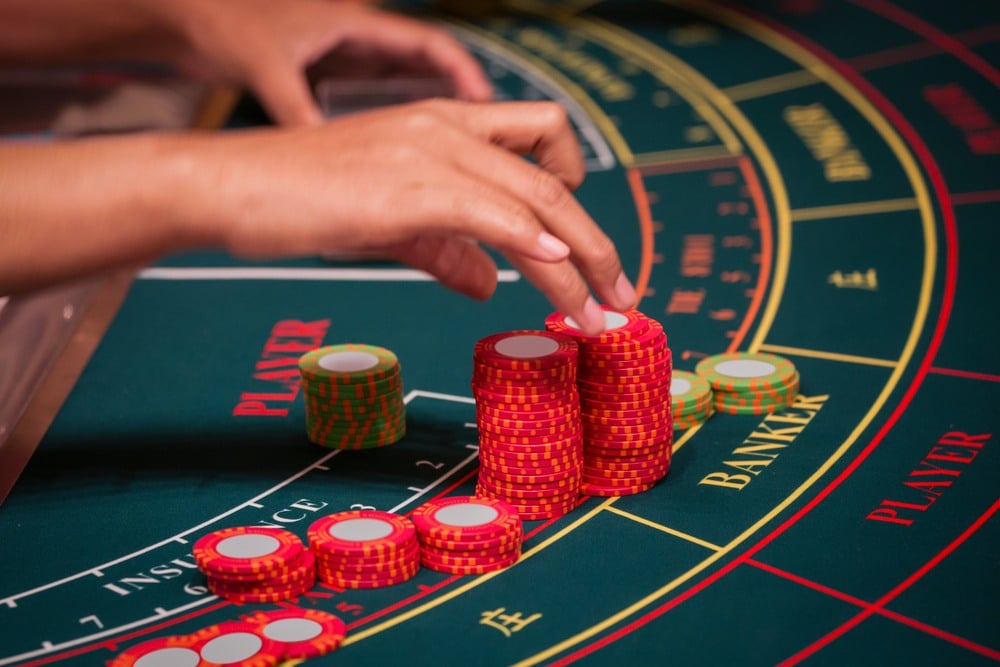
Image Credit: Visualize Creative/Shutterstock
Avoiding Common Pitfalls in Baccarat
Some mistakes are as timeless as the game itself. Make sure to steer clear of these frequent missteps:
- Chasing Tie Bets: The high payout is tempting, but the odds rarely justify the bet.
- Forgetting the Banker Commission: Always remember the 5% fee on winning Banker bets.
- Looking for Patterns: Baccarat outcomes are independent, especially true for online or RNG-based games.
- Overcomplicating Your Strategy: No betting system can change the innate house odds.
- Ignoring Mini-Baccarat’s Speed: Faster rounds mean more hands played (and potentially more losses)-stay mindful of your pace.
Effective Baccarat Strategies for Better Play
Although luck dominates, you can maximize your results by following a few practical principles:
- Consistently Bet on Banker: Mathematically your best choice.
- Set and Respect Bankroll Limits: Don’t exceed your planned losses-when you hit your limit, walk away.
- Avoid Doubling Down: Systems like the Martingale can drain your funds quickly.
- Track Results: Maintaining a written record helps you remain disciplined and honest about your wins and losses.
- Take Advantage of Casino Rewards: Due to higher stakes, Baccarat players are often eligible for valuable comps.
Baccarat’s Widespread Influence-Spotlight on Macau
No other region has embraced Baccarat like Macau, where it generates more than 88% of table game revenue and has helped the city surpass Las Vegas as the global gambling capital. Legends of astonishing wins-like an anonymous high roller who won over HK$100 million in 2005-fuel the game’s mythos and reinforce its elite aura.
Comparing Casino vs. Online Baccarat
Baccarat fans now enjoy both traditional casino tables and online gameplay, each with distinct advantages:
Physical Baccarat Tables
- Ceremonial presentation of cards and luxurious ambiance
- Live, social setting with real-time reactions
- Typically higher minimum bets ($25-$50 in major venues)
- Slower rounds and attentive service
Online Baccarat
- Lower stakes (many sites start at $1 per hand)
- Rapid gameplay-more hands per hour
- Anonymity and convenience
- Access to free-play and bonuses
- Options for live dealer tables, blending traditional atmosphere with modern tech

Image Credit: Kitreel/Shutterstock
Selecting Your Ideal Baccarat Table
Choosing the right Baccarat table can impact your experience and results. Consider these factors:
- House Commission Rate: 5% is standard, but some tables reduce this to 4%, or offer commission-free versions (often with different winning conditions).
- Minimum Bets: Main Baccarat tables may require $25-$100 minimums, while mini-Baccarat typically starts at $10-$25.
- Available Variants: Explore house rules, such as Dragon Bonus or EZ Baccarat, if you’re interested in side wagers.
- Game Speed: Mini-Baccarat offers a faster pace-which means more action and possible profits or losses.
- Atmosphere Preference: Decide whether you prefer the ritual and ceremony of full-sized tables or the casual nature of mini-Baccarat.
Bankroll Management: Essential for Baccarat Success
Good bankroll discipline means:
- Defining Your Session Budget: Know your upper loss limit before playing. A solid rule is to have 30 times your average bet available per session.
- Smart Bet Sizing: Don’t wager more than 1-5% of your session bankroll per hand.
- Establish Win and Loss Limits: Consider stopping after a 50% gain or loss relative to your start.
- Track Time: Set time limits to avoid making costly mistakes due to fatigue.
A striking story of bankroll success comes from John Fairfax, who famously used his Baccarat gains to fund a solo Atlantic row in 1969-proving that discipline can yield unexpected rewards.
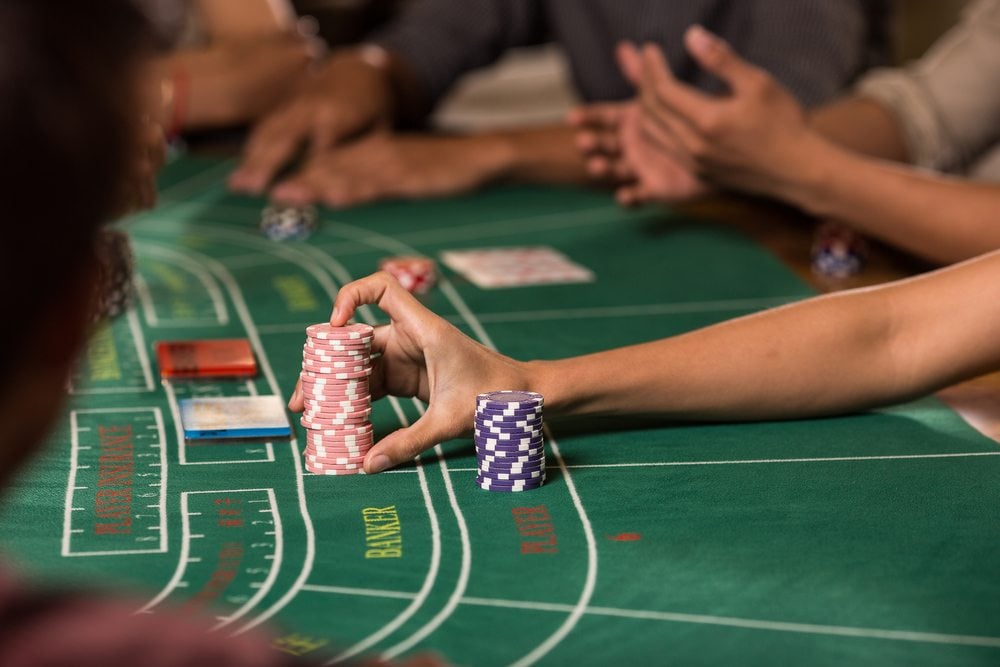
Image Credit: sakadaphoto/Shutterstock
Baccarat’s Lasting Charm: Simplicity, Style, and Suspense
Several reasons explain Baccarat’s enduring popularity:
- Uncomplicated Gameplay: No decisions after placing your bet keeps the action streamlined.
- Attractive Odds: Especially for Banker bets, among the lowest house edges around.
- Elegant Settings: Often played in luxurious surroundings with personalized service.
- Iconic Connections: The game’s image is closely tied to James Bond and the world’s elite.
- Exciting Reveals: The moment of truth as cards are turned creates high tension.
For pop culture fans, the first “Casino Royale” novel introduced millions to Baccarat’s glamour, securing the game’s place as the ultimate symbol of casino chic-even though later Bond movies switched to poker.
The Mathematics of Baccarat: House Edge Explained
Here’s how the house edge stacks up for key bets:
| Bet Type | House Edge (%) | Common Payout |
|---|---|---|
| Banker | 1.06 | 1:1 (minus 5% commission) |
| Player | 1.24 | 1:1 |
| Tie | 14.36 | 8:1 or 9:1 |
Certain Baccarat variants alter these odds:
- Super Six/Punto 2000: Banker wins with six pay only 50%, raising the house edge.
- EZ Baccarat: No commission, but Banker wins with a three-card seven become a push.
- Dragon Bonus: Side bet with varying house edge (around 2.65-9.37%).
Practicing Baccarat for Free: Smart Ways to Learn
Get comfortable with Baccarat before risking money by trying:
- Free online casino versions, available at nearly every major gambling site
- Mobile apps offering risk-free Baccarat play
- Casino floor tutorials during quiet periods
- Practicing at home with friends and a deck of cards
- Observing live tables to learn flow and etiquette
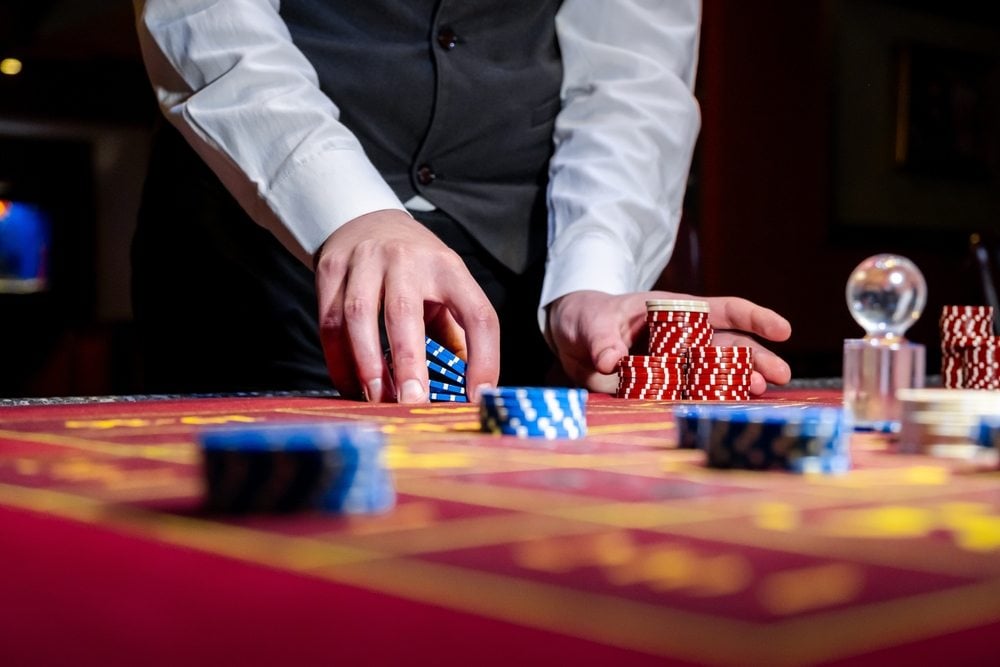
Image Credit: 360VP/Shutterstock
Exploring Advanced Baccarat Strategies
For aspiring experts, there are a few advanced tactics-though none can erase the casino’s built-in edge:
- Card Counting: Provides only a negligible (0.05-0.07%) advantage since rules are rigid and decks are shuffled frequently.
- Pattern Seeking: Many players enjoy recording results hoping to spot trends, though this has no mathematical basis.
- Edge Sorting: Some attempt to discern flawed card manufacturing, as in the high-profile legal cases involving Phil Ivey-but casinos now guard vigorously against this.
- Streak Betting: Betting with perceived “hot hands”-though there’s little support for this approach, some players find it engaging.
The 2012 Phil Ivey case, where millions were won but eventually withheld, remains the most famous example of edge sorting in Baccarat.
Baccarat FAQs: Your Top Questions Answered
What is the goal of Baccarat?
The main aim is simple: predict if the Player or Banker hand will get closest to nine, or if it will be a tie.
Is card counting effective in Baccarat?
While technically possible, the effect is minuscule-usually less than 0.1%-and not practically worthwhile.
What’s a natural in Baccarat?
A “natural” occurs when the first two cards total 8 or 9. With a natural, no more cards are drawn. If both hands show naturals, the higher value wins, or it’s a tie if equal.
Baccarat Glossary: Essential Terms
- Banco: Banker, in Spanish or Italian.
- Chemin de Fer: Classic French Baccarat.
- Commission: Standard fee (5%) on winning Banker bets.
- Coup: A full round of Baccarat play.
- Dragon Bonus: A popular Baccarat side bet.
- La Grande: A natural nine.
- La Petite: A natural eight.
- Punto: Player, in Spanish or Italian.
- Standoff: Another term for a tie.
- Tableau: The game’s drawing rules.
Conclusion: Baccarat’s Timeless Allure
Baccarat dazzles with its blend of simplicity and sophistication. Its rules are easy to master, its odds are among the most favorable for players, and its storied past means every game comes with a touch of drama and elegance. Whether you’re chasing James Bond’s shadow, aiming for serious returns, or just sampling the thrill of table games, Baccarat provides excitement without unnecessary complexity.
Remember these essentials:
- Banker bets consistently deliver the best odds, even with commission.
- Tie bets may look enticing, but the odds are stacked against you.
- No system can eliminate the house edge-approach the game with discipline













